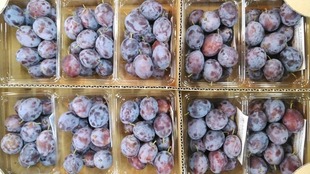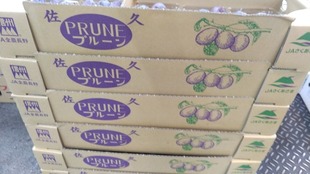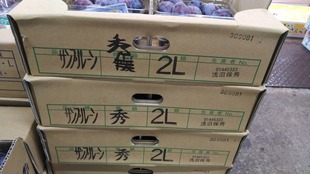The Iwamurata clan was established in August 1703 by Masatomo Naito (a hatamoto in the early Edo period, Masakatsu Naito, and his son Masatomo, both of whom died during his tenure as Osaka standard, and whose family temple is in Edo. It is not known whether when the master passed away, he was cremated and his bones brought back to the family temple, or whether he was buried at a temple in Osaka.The name of the domain was changed to the name of Masatomo, the second lord of the Akanuma domain, after he set up a camp in Hitachi Takamori. It began when the Akanuma Domain in Musashi Province was given 16,000 koku of rice in 27 villages in Saku District. The 7th generation, Masanawa, was Tadakuni Mizuno's younger brother, and after successively serving as head of the castle and Fushimi magistrate, he became the lord of the castle, and planned to abolish the previous camp and build a castle on this land. Permission was granted at the time of the 8th generation Shosei, and construction began, but the castle was abandoned shortly after the beginning of the Meiji era. In response to the Boshin War, Seisei remained in Edo for a long time, and was ordered to be restrained by the new Meiji government because he was not clear about his position of obedience. Therefore, he requested that from now on, he would cooperate with the new government's army and send out his domain soldiers, and sent troops to the Hokuetsu War and other battles. It seems that the post-war award was 2000 ryo(a base unit).
【Product name】
Sun prune
【Type】
Prunus domestica
【Origin of name】
It was selected in Usuda Town, Minamisaku District (currently Saku City) at that time, and was named by the prefecture and the then JA Nagano Keizairen (currently JA Zen-Noh Nagano) and the producer representative in 1979.
【Producing area】
Iwamurada Arajuku, Saku City, Nagano Prefecture (JA Saku Asama, JA Zen-Noh Nagano)
【Major features】
Oguri One (male), who attracted attention as the eldest son of the famous horse Oguri Cap who won four Japanese horse racing G1, seems to have died on July 5, 2022 at Suetoshi Ranch(shiga)in Saku City, Nagano Prefecture due to senility. He was 30 years old. Suetoshi Ranch announced on Twitter on the 5th. He had a long sleep at 30 years and 5 months. JA Saku Asama’s administrative area spans 3 cities and 4 towns: Komoro City, Saku City, Sakuho Town, Karuizawa Town, Miyota Town, Tateshina Town, and Tomi City (formerly Kitamimaki Village District), almost in the center of Honshu, Nagano Prefecture. It is located at the eastern gateway to. Since ancient times, it has formed a wide area in all aspects such as politics, economy, and culture, and has an area of 1,018 km2. The altitude of the cultivated land extends from 500 to 1,300 m, and the cold air is quite severe in winter, and the temperature difference between day and night is large. Sakudaira, one of the four flats in the prefecture, spreads out and is surrounded by clear blue air and beautiful rich nature. You can see Mt. Asama in the north, Mt. Yatsugatake in the south, Myogi-Arafune Saku Kogen National Monument in the east, and Mt. Tateshina in the west. The Chikuma River, which is rich in poetry, runs through the jurisdiction from north to south, and has enriched people’s lives for a long time. Taking advantage of the blessed natural environment, climate, and location conditions, it is attracting attention from the national market as a comprehensive supply center for fresh agricultural and livestock products such as rice grains, fruit trees, flowers, mushrooms, and livestock, centering on vegetables. Through each business closely related to the region, we will promote industry and regional development to create a comfortable regional environment centered on agriculture that nurtures life, aiming to realize a beautiful green hometown and a vibrant region where people can live with peace of mind and longevity. “Saku City” is located at the eastern end of Nagano Prefecture, and is a plateau city blessed with greenery and clear streams, located in the center of Sakudaira, one of the four flats in the prefecture sung in the prefectural song “Shinano no Kuni(The prefectural song of Nagano Prefecture released in 1900. Lyrics: Retsu Asai, Composition: Sueharu Kitamura. The lyrics consist of No. 6 and incorporate Nagano Prefecture’s geography / mountain river, industry, scenic spots / historic sites, celebrities from Nagano Prefecture, Usui Pass and railways. It seems that only No. 4 has a different melody and tempo. It is often sung at elementary and junior high schools and high schools in Nagano prefecture, and it seems that it is even said that if you grew up in Shinshu, you can sing “Shinano no Kuni”. In addition, it is said that it is always chorused at the end of company meetings and banquets and even if you live in the prefecture, if you can’t sing Shinano no Kuni, you’re a stranger. I hear that it has been popular since a wide range of ages as a prefectural song that shows a sense of solidarity.)”. The Chikuma River, which is the tributary of the Nametsu River, Katakai River, and Yukawa, runs through the center of the city, and Saku Carp, which grows from its abundant clear stream, is a typical specialty. The city has an inland climate with a large temperature difference due to dryness, the average annual temperature (about 10 ° C) is lower than the national average (about 13 ° C), and the annual rainfall is about 1,000 mm, which is nationwide. There are few areas. In addition, the sunshine hours are around 2,000 hours a year, which is much higher than the national average (about 1,500 hours), and it is an area with a high rate of sunny weather. It seems that the name ‘Saku’ first appeared in Japanese history about 1,500 years ago. It appears in the ”Sandai Jitsuroku”, which is a compilation of the history of the third emperor Seiwa, Yozei, and Koko. Then, it is also written in ‘Engi-shiki’. There are various theories about the etymology of Saku, and it is not clear. In the city, Jomon, Yayoi period ruins, and remains have been excavated everywhere, proving that indigenous peoples lived before the historical period. It is said that the rural settlement was born in a clear form at the end of the Heian period. Manors such as Oi manor, Banno manor, and Hiraga manor were built, and in the Warring States period, it became a place controlled by Mr. Takeda (Kai Genji). In the Tokugawa era, magistrate’s offices were set up in Hiraga and Iwamurada, and the place controlled as an imperial fief and the place that was the private territory of the Tatsuoka clan, Iwamurada clan(In August 1703, Masatomo Naito changed from the Akanuma Domain in Musashi Province and was given 16,000 koku in 27 villages in Saku District. Masatsuna Naito, the 7th generation, was the younger brother of Tadakuni Mizuno, and became a castle nominative case after serving as captains of the great guards and shogunate administrator Fushimi. The castle was built when the 8th generation Masanobu was granted permission, but soon after the Meiji era, the castle was abandoned.), and Komoro clan came to be mixed. The farthest point from the sea in Japan is in Saku City. It is located near the border ridge with Gunma prefecture, about 1900 m southeast of Amekawa Dam, and is said to be the farthest point (114.858 km) from the sea in Japan. This was triggered by a student at the University of Tsukuba contacting the Geographical Survey Institute of the Ministry of Construction (currently the Ministry of Land, Infrastructure, Transport and Tourism) in November 1996, and the staff of the Geographical Survey Institute used a computer to find out in about a month. In terms of image, Hokkaido, which has vast land, seems to have a farther point, but the farthest point in Hokkaido is about 7 km east of Mt. Biei in the Ishikari Mountains, and it seems to be 108.2 km from the coastline. The Mochizuki district (formerly Mochizuki Town) is located in the hills at the foot of Mt. Tateshina (elevation 2,530 m) in the eastern part of Nagano Prefecture, ranging from 600 m above sea level to 2,400 m near the summit of Mt. Most of the villages in Mochizuki’s shopping district, Kasuga, Kyowa, and Fuse are distributed from 650 m to 800 m above sea level. Blessed with tourist resources such as hot springs, valleys, golf courses, villas, and stone Buddha, the clear stream of the Kakuma River, which originates from Mt. Tateshina, flows through the city and flows into the Chikuma River. The east borders the former Asashina Village (Saku City). To the west, it borders Tateshina Town from Lake Shirakabako to Chino City, from the New Wada Tunnel to Shimosuwa Town, and from the Misayama Tunnel to Matsumoto City. The south is a spectacular landscape that extends from Kasuga Valley to Mt. Tateshina and the Yatsugatake Mountain Range. The north borders Komoro City on the Mimakihara Plateau, and also leads to Toumi City (former Kitamimaki Village and former Tobu Town merged) and Ueda City along the Kakuma River. On April 1, 2005, Saku City, Mochizuki Town, Asashina Village, and Usuda Town(Located in the eastern part, with a view of Mt. Asama to the north and Mt. Yatsugatake to the south, the Chikuma River, which is rich in travel, flows through the center of the town, and it was a town surrounded by wonderful nature and greenery. It was developed as a “welfare and medical town” with the world-famous Saku General Hospital as a mecca for rural medicine and numerous welfare facilities. In recent years, along with the star-shaped Goryokaku, he has been walking as “Star no Machi Usuda” with the opening of the parabolic antenna of the Institute of Space and Astronautical Science of the Ministry of Education and the opening of Usuda Star Dome. The Galactic Federation has an endless romance to space, and in November 1987, two cities and three towns, where the Ministry of Education, Culture, Sports, Science and Technology’s Space Science Research Institute facility is located, shook hands from Akita prefecture in the north to Kagoshima prefecture in the south. birth. In November 2001, Sanriku Town merged with Ofunato City, and I heard that in 3 cities and 2 towns, the bond of friendship was deepened through wide-ranging exchanges such as children’s exchanges, products, culture, women, and sports.)merged to form New Saku City. The main industry is a high-tech industry centered on electrical machinery and machinery. Excellent companies such as TDK Corporation (Otai) are located in the five industrial parks of Mikawada, Nagatoro, Nishiyashiki, Odai, and Kishino. In addition, Saku Research Park (44.1 ha), which is the core of the Asama Technopolis Development Plan, is located in a hilly area with abundant natural environment as a research and development type industrial park. There are four shopping districts in the city: Iwamurada, Nakagomehara, Nakagome, and Nozawa. So far, shops have been modernized in line with disaster prevention block development projects and land readjustment projects, and distinctive urban development has been promoted. In recent years, with the expansion of large-scale mass retailers in the suburbs, the four shopping streets are gradually connected, and a vibrant town that is continuous from north to south is being formed. A Saku distribution business complex (17 ha in area) was established near Saku I.C. There were 6 wholesale business establishments including 6 fruit and vegetable markets. Blessed with fertile land, abundant water, and a favorable climate, it plays an important role as a comprehensive supply base for fresh agricultural products. Among them, Saku rice, which is known for its high quality rice, is getting more and more evaluated as a safe rice with low pesticides in combination with paddy carp raising. In addition, fruit trees such as apples, peaches and prunes, vegetables such as lettuce, cabbage and Chinese cabbage, and flowers such as chrysanthemums and carnations are also actively cultivated. In the fishery industry, in addition to existing fish species such as Saku carp and crucian carp, rainbow trout, and ayu as city fish, a new species of common whitefish(Coregonus Maraena)with good taste is cultivated. However, the agricultural working population continues to decline year by year due to the shift to other industries. “Sun Prune”: It has a strong sweetness and a good taste. A variety found in the Saku region, it has long been loved as a very popular local standard prune. It’s a small size that’s easy to eat, so it’s popular with people of all ages. The size of the fruit is about 30 g, it has a short oval shape, and the skin is black-purple. It is a tree with a height of 4 m or more, and in the Saku region of Nagano prefecture, pretty white flowers that resemble plum blossoms bloom from the end of April to the beginning of May. Some varieties do not self-pollinate, and bees help pollinate. Pollinated flowers begin to grow in June, and early varieties are said to bear fruit at the end of July. Prune, which is widely cultivated in the Saku region, ripens in mid-September. The color of the fruit varies from yellow, purple-red, and bluish-purple, and the flesh becomes amber. The seeds are small for the thick flesh, and the sweet scent heals the feelings. Also, the pulp and seeds are quickly separated and easy to eat. Plum is a fruit belonging to the subgenus Plum of the genus Plum of the family Plum and is a type of plum. There are several types of plums depending on the place of origin, but the strain belonging to the Mediterranean fruit belonging to the Eurasian domestic plums is called prunes. In Japan, the whole domestic plum is called prunes. In Europe, raw plums are often called plums, and dried ones are often called prunes. The origin of prunes is said to be the Caucasus region, which is sandwiched between the Caspian Sea and the Black Sea, which are considered to be the longevity areas of West Asia. From there, it settled in Southern Europe and was cherished as an excellent medicinal fruit tree during the Greek and Roman times. It spread to Europe and then seems to be cultivated mainly in France. It is said that it spread to the United States and Oceania in the middle of the 19th century. Today, about 70% of the world’s prunes are grown in California. There is no doubt that the history of cultivation is about 2000, which is relatively young compared to apples, which have a history of 4000 years. In Japan, it was cultivated a little in Nagano prefecture and Tohoku region, which have similar climates, in the early Meiji era, but it did not take root. After that, cultivation was resumed in Usuda Town in the Saku region in the latter half of the 1955’s.






0 件のコメント:
コメントを投稿